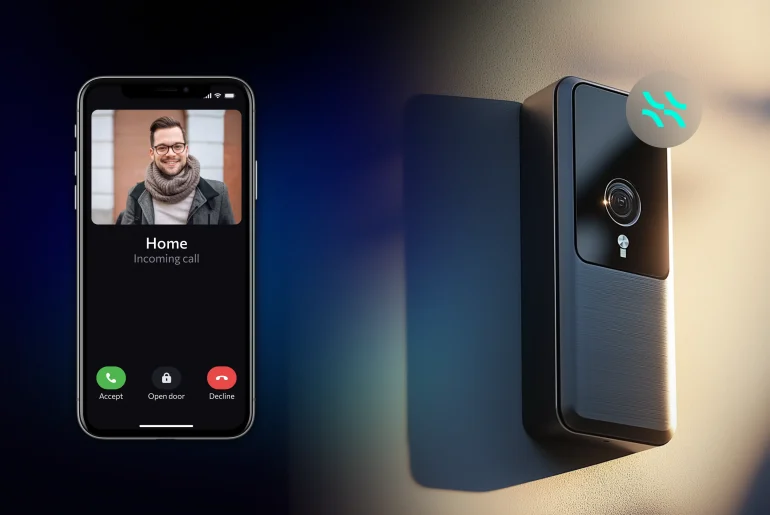As telecoms and internet service providers (ISPs) explore new ways to expand their service portfolios and unlock recurring revenue, Smart Intercom Solution (SIaaS) is quickly gaining traction. With the explosion of smart buildings, digital access control, and the demand for seamless tenant experiences, smart intercoms are evolving from hardware-heavy infrastructure to cloud-delivered, software-defined solutions.
But for many service providers entering this space, one critical question arises early in the process: “What equipment can we support?”
The intercom market is notoriously fragmented, with thousands of models from manufacturers like Hikvision, Dahua, 2N, Akuvox, Comelit, Aiphone, and many others. Each system varies in protocols, features, and integration requirements. This diversity can easily become a bottleneck for deployment.
Enter Vendor-Agnostic Software: The Great Enabler of Smart Intercom Solution
Vendor-agnostic smart intercom software can eliminate this challenge. These platforms are purpose-built to integrate with the vast majority of intercom devices.
This level of interoperability enables telecoms and ISPs to:
- Onboard existing infrastructure in older buildings and new developments alike.
- Launch smart intercom services faster, without hardware limitations.
- Avoid vendor lock-in and maintain flexibility across customer segments.
- Reduce integration costs by up to 70%, compared to proprietary systems.
The Scale of the Opportunity for Smart Intercom Solution
- Over 350 million intercom devices are currently installed globally, with 70% still operating on outdated analog or closed IP systems.
- The global smart intercom market is projected to grow from $2.4 billion in 2023 to over $5.1 billion by 2028, with multi-dwelling units (MDUs), office buildings, and gated communities driving most of the demand.
- In urban regions like the EU and North America, more than 65% of new real estate projects now require IP-based access systems managed remotely.
- In Latin America 30–40% of new residential and commercial projects in major cities now specify remote-manageable IP intercoms. Brazil and Argentina are key markets embracing mobile-integrated IP/video intercoms. Over 350 million intercom devices are currently installed globally, with 70% still operating on outdated analog or closed IP systems.
- In Central Asia 25–35% of new urban developments in Central Asian capitals (e.g., Nur-Sultan, Tashkent) require IP-capable intercoms today, trending upward with infrastructure upgrades. Urbanization and smart-building initiatives (e.g., in Kazakhstan, Uzbekistan) signal increasing IP deployment.
- In MENA fast expansion in cloud-based and IP intercoms in luxury and commercial sectors Thus, it’s reasonable to estimate 35–45% of new urban real estate in MENA is now specifying remote-manageable IP intercom systems. GCC nations like UAE and Saudi Arabia lead in smart-building tech adoption: around 37% of new smart building projects incorporate digital intercom systems.
Business Case for Telecoms and ISPs
With hardware compatibility solved, service providers can focus on monetization. Smart intercom services can be offered as:
- Recurring monthly subscriptions (e.g., $2–$10 per unit per month)
- Bundled packages with home security, fiber, or IoT services
- Premium feature upgrades (video archiving, guest management, facial recognition)
- B2B white-label platforms for real estate developers and property managers
Case studies show that telcos offering SIaaS can achieve 20–40% higher ARPU (average revenue per user) within smart building portfolios, and customer churn reduction of 18–25% when bundled with broadband services.
Benefits of Smart Intercom Solution to Building Owners and Tenants
These solutions integrate seamlessly with existing intercom hardware. It allows properties to modernize without the hassle of ripping and replacing legacy systems. With a mobile-first approach, tenants can unlock doors remotely, view live video feeds, and manage guest access from anywhere. For building owners and property managers, this means enhanced security through digital access logs and compliance tracking, along with lower operational costs and improved tenant satisfaction.
- No need to rip and replace existing intercom systems
- Mobile-first experience: open doors from anywhere, view live video, grant guest access
- Improved building security and compliance logging
- Lower operating costs for property managers and developers
Why Now?
The timing couldn’t be better. Several trends are aligning:
- Post-pandemic demand for contactless access
- Rising expectations from digitally native tenants
- 5G, fiber, and Wi-Fi 6 rollouts, making real-time video services viable at scale
- Strong growth in smart building investments, expected to reach $127 billion globally by 2027
Final Thoughts
Launching a smart intercom service no longer has to be a complex hardware puzzle – Aipix changes the game.
With its vendor-agnostic architecture, Aipix supports seamless integration with more than 98,3% of intercom and VSaaS providers equipment globally – ranging from analog systems to modern IP-based units – eliminating compatibility headaches for telecoms and ISPs. Thanks to its open, developer-friendly API, Aipix enables rapid, low-effort integration into existing ecosystems without vendor lock-in.
But Aipix goes far beyond just smart intercom functionality.
It’s a multi-service platform that unifies cloud video surveillance (VSaaS), smart intercom, and video analytics into a single, scalable solution. This means service providers can deliver value-added services like facial recognition, video archiving, and behavioral insights – all from one platform.
For telecoms and ISPs, this means:
- Faster time to market without hardware constraints
- Recurring revenue from bundled VAS (Value-Added Services)
- Stronger customer retention through integrated, mobile-first tenant experiences
- Scalable growth into the broader smart building and surveillance markets.
In essence, Aipix is not just intercom-as-a-service – it’s infrastructure for the next generation of smart building services.
Now is the time for telecoms and ISPs to step beyond pure connectivity and embrace their role as service orchestrators in the smart building ecosystem – with Aipix as a future-ready foundation. Contact us now!





